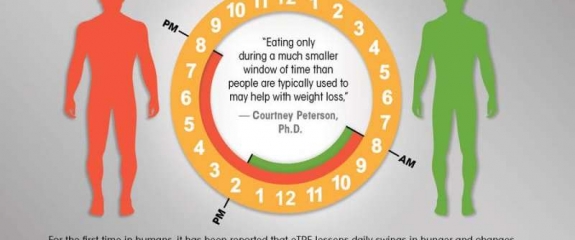Could it be WHEN you eat?

A study has found that adopting a meal-timing strategy reduces swings in hunger and alters patterns of fat and carbohydrate burning. If you eat your last meal of the day by the mid-afternoon (and do not eat again until breakfast the next morning) the subsequent change in metabolism may help with losing weight. Termed early time-restricted feeding, or eTRF, you eat only during a much smaller window of time than we traditionally follow. In the study, eating between 8 a.m. and 2 p.m. followed by an 18-hour daily fast kept appetite levels more even throughout the day. Studies still need to be done to confirm whether eating a very early dinner, or even skipping dinner, may have some benefits for losing weight. However, earlier animal studies showed that eTRF helped rodents burn more fat, reduced body fat and decreased the risk of chronic diseases in rodents.
The body has an internal clock, and many aspects of metabolism are at their optimal functioning in the morning. Thus, eating in time with the the body's programmed circadian clock by eating earlier in the day may positively influence health. This first test of eTRF in humans follows rodent studies of this approach to weight loss, which previously found that eTRF reduced body fat and decreased the risk of chronic diseases in rodents.
During the current study, the authors followed 11 men and women with excess weight over 4 days of eating between 8 a.m. and 2 p.m., and 4 days of eating between 8 a.m. and 8 p.m. Researchers then tested the impact of eTRF on calories burned, fat burned and appetite. Participants tried both eating schedules, ate the same number of calories both times and completed all testing under supervision. The researchers found that, although eTRF did not affect how many total calories participants burned, it reduced daily hunger swings and increased fat burning during the night. It also improved the body's ability to switch between burning carbs and burning fats (termed metabolic flexibility).
Source provided by University of Alabama at Birmingham. Note: Content was edited for style and length.


